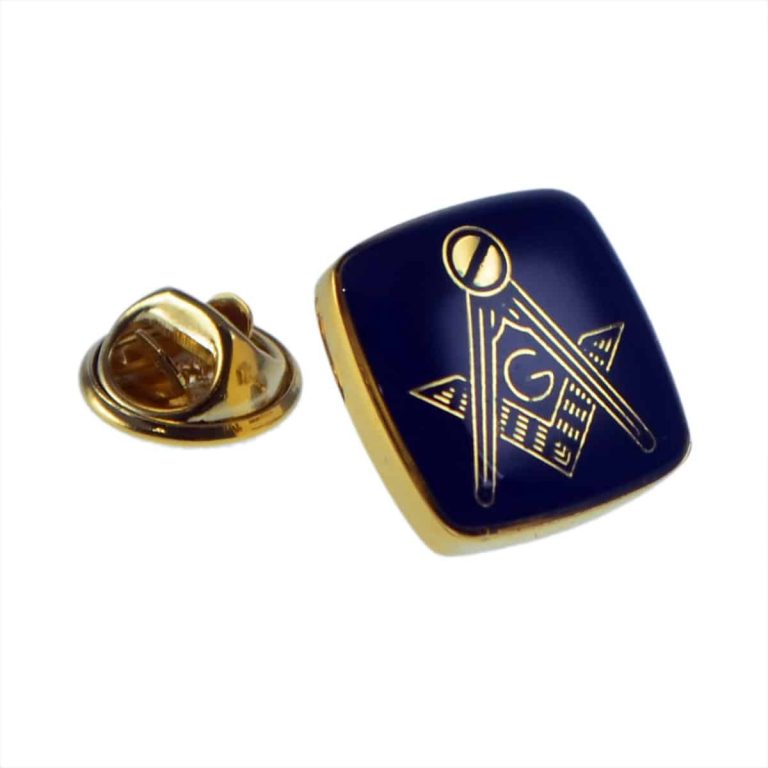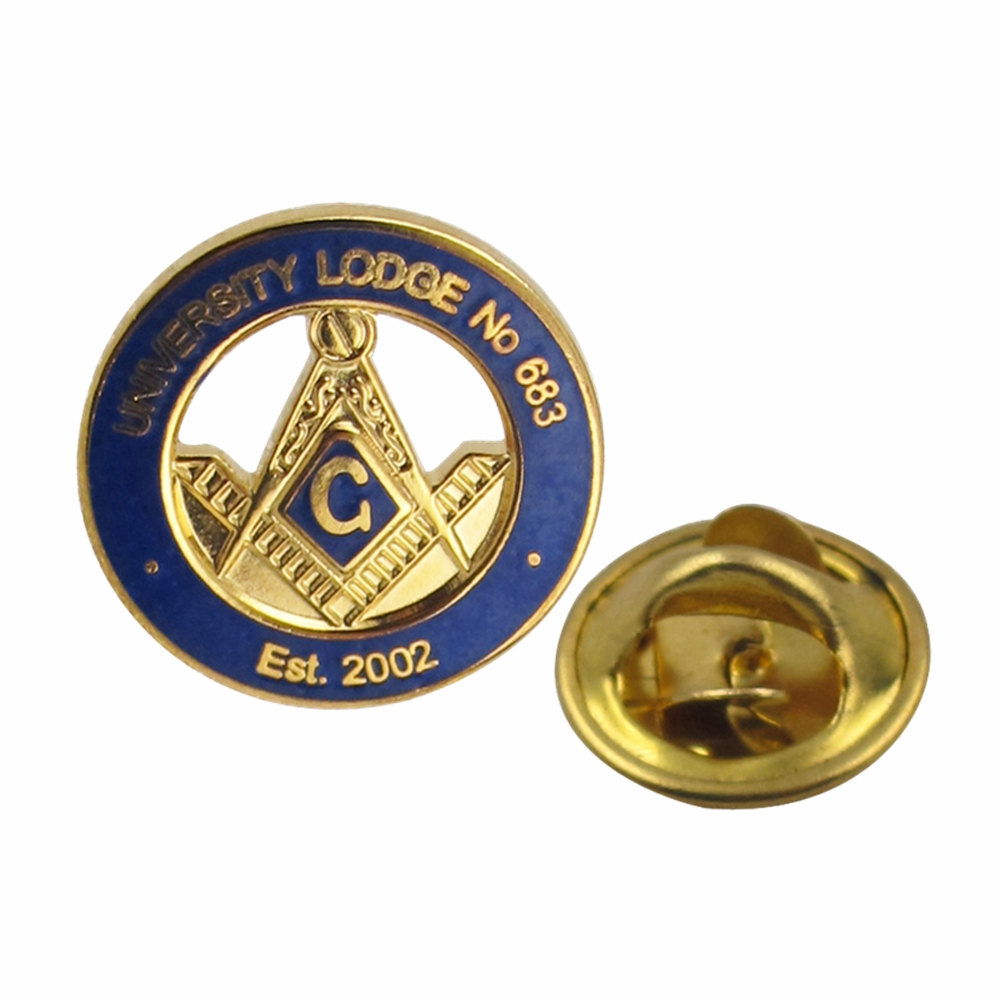Masonic Pins: A Timeless Symbol Of Brotherhood And Heritage
Masonic pins have long been cherished symbols of fraternity and tradition, representing the values and unity of Freemasonry. These intricate pieces of jewelry serve as a visible reminder of the bond shared by members of this ancient and prestigious organization. From the first initiation to lifelong membership, masonic pins hold deep significance, embodying the principles of integrity, wisdom, and brotherhood. As we delve into the world of masonic pins, we will uncover their rich history, diverse designs, and the profound meaning behind each piece.
For those who belong to the Freemasons, masonic pins are far more than just accessories; they are a testament to a shared legacy and a commitment to timeless ideals. These pins are meticulously crafted to reflect the values and traditions of the fraternity, making them highly sought-after by collectors and enthusiasts alike. Whether you're a member looking to enhance your collection or simply curious about the world of Freemasonry, this article will provide you with valuable insights into the significance and appeal of masonic pins.
In this comprehensive guide, we'll explore the history, design, and cultural importance of masonic pins. We'll uncover the craftsmanship that goes into creating these symbolic pieces and examine why they continue to captivate individuals worldwide. By the end of this article, you'll have a deeper appreciation for the artistry and tradition that make masonic pins truly remarkable.
Read also:Is John Harbaughs Daughter Married Everything You Need To Know
Table of Contents
- What Are Masonic Pins and Why Are They Important?
- History of Masonic Pins
- Design Elements in Masonic Pins
- How Are Masonic Pins Made?
- Unique Features of Modern Masonic Pins
- Where to Find Authentic Masonic Pins?
- Why Do People Collect Masonic Pins?
- How Much Do Masonic Pins Cost?
- Are Masonic Pins Only for Freemasons?
- Conclusion: The Enduring Legacy of Masonic Pins
What Are Masonic Pins and Why Are They Important?
Masonic pins are symbolic jewelry pieces worn by members of the Freemasons to signify their membership, rank, and achievements within the fraternity. These pins are not only decorative but also carry deep symbolic meaning, representing the values and principles of Freemasonry. Each pin is designed with specific symbols and motifs that reflect the wearer's status and contributions to the organization. For many Freemasons, masonic pins serve as a badge of honor and a way to connect with fellow members.
Why are masonic pins so important? They act as a visible reminder of the brotherhood and shared ideals of Freemasonry. Whether worn during formal gatherings or everyday life, these pins serve as a testament to the wearer's commitment to the principles of integrity, wisdom, and mutual support. Additionally, masonic pins are often passed down through generations, preserving the legacy of the fraternity and its members.
History of Masonic Pins
The history of masonic pins dates back centuries, with their origins tied to the early days of Freemasonry. Originally, these pins were simple yet meaningful symbols worn by members to identify themselves to others in the fraternity. Over time, the designs became more intricate and personalized, reflecting the growing complexity and diversity of the organization. Today, masonic pins remain an integral part of Freemasonry, symbolizing the enduring traditions and values of the brotherhood.
How Have Masonic Pins Evolved Over Time?
The evolution of masonic pins mirrors the development of Freemasonry itself. In the past, these pins were often handcrafted by skilled artisans, using techniques passed down through generations. As technology advanced, new methods of production emerged, allowing for greater precision and detail in the design. Despite these advancements, the core symbolism and meaning behind masonic pins have remained unchanged, ensuring their continued relevance in modern times.
Design Elements in Masonic Pins
Masonic pins are renowned for their intricate designs, which incorporate a variety of symbols and motifs significant to Freemasonry. Common elements include the square and compass, the all-seeing eye, and the letter "G," each representing different aspects of the fraternity's teachings. These symbols are carefully chosen to convey the principles of wisdom, morality, and brotherly love that underpin Freemasonry. The craftsmanship involved in creating these pins ensures that every detail is executed with precision and care.
What Symbols Are Commonly Found in Masonic Pins?
- Square and Compass
- All-Seeing Eye
- Letter "G"
- Five-Pointed Star
Each symbol in masonic pins carries specific meaning, contributing to the overall message of unity and wisdom. For example, the square and compass represent morality and ethical conduct, while the all-seeing eye symbolizes divine providence and the presence of a higher power. Together, these symbols create a powerful visual representation of the values and principles that define Freemasonry.
Read also:The University Of Edinburgh Prestigious Education And Research Excellence
How Are Masonic Pins Made?
The process of creating masonic pins involves several stages, from designing the initial concept to crafting the final product. Skilled artisans begin by sketching the design, ensuring that all symbolic elements are accurately represented. Once the design is finalized, the pin is crafted using high-quality materials such as gold, silver, or bronze. Techniques such as engraving, casting, and enameling are employed to add depth and detail to the piece, resulting in a beautifully finished masonic pin.
Unique Features of Modern Masonic Pins
In recent years, modern masonic pins have incorporated innovative features that enhance their appeal and functionality. Advances in technology have allowed for greater customization, enabling members to create personalized pins that reflect their individual achievements and interests. Additionally, new materials and finishes have expanded the range of options available, allowing for more vibrant and eye-catching designs. Despite these innovations, the fundamental purpose of masonic pins remains unchanged: to serve as a symbol of unity and shared values.
Where to Find Authentic Masonic Pins?
When searching for authentic masonic pins, it's essential to choose a reputable source. Many specialized jewelers and online retailers offer a wide selection of high-quality pins, ensuring that members can find pieces that meet their specific needs and preferences. It's also important to verify the authenticity of the pins, as counterfeit items can sometimes be found on the market. By purchasing from trusted suppliers, individuals can ensure that their masonic pins are genuine and of the highest quality.
Why Do People Collect Masonic Pins?
Collecting masonic pins has become a popular hobby among both Freemasons and non-members alike. For many, these pins represent a tangible connection to the rich history and traditions of Freemasonry. Collectors often seek out rare and unique pieces, adding to their collections over time. The pursuit of these pins not only satisfies a personal interest but also fosters a deeper understanding and appreciation of the fraternity's cultural significance.
How Much Do Masonic Pins Cost?
The cost of masonic pins varies depending on factors such as material, design complexity, and craftsmanship. Simple pins made from base metals can be relatively affordable, while those crafted from precious materials like gold or silver may command higher prices. Custom-designed pins, which often feature intricate details and personalized elements, tend to be more expensive due to the additional time and effort required in their creation. Regardless of cost, the value of masonic pins lies in their symbolic meaning and the traditions they represent.
Are Masonic Pins Only for Freemasons?
While masonic pins are primarily associated with members of the Freemasons, they are not exclusive to this group. Many people, including historians, collectors, and enthusiasts, appreciate the artistry and symbolism of these pins, making them accessible to a wider audience. Additionally, some masonic pins are designed specifically for non-members, featuring generic symbols and motifs that appeal to those interested in the culture and history of Freemasonry. This inclusivity has helped to broaden the appeal of masonic pins beyond the fraternity's immediate membership.
Conclusion: The Enduring Legacy of Masonic Pins
Masonic pins continue to play a vital role in the traditions and culture of Freemasonry, serving as powerful symbols of unity, wisdom, and brotherhood. Their intricate designs and profound meanings make them cherished possessions for members and collectors alike. As we have explored in this article, the history, craftsmanship, and cultural significance of masonic pins highlight their enduring legacy and relevance in today's world. Whether worn as a badge of honor or collected as a testament to the fraternity's rich heritage, masonic pins remain a timeless and meaningful symbol of Freemasonry.


